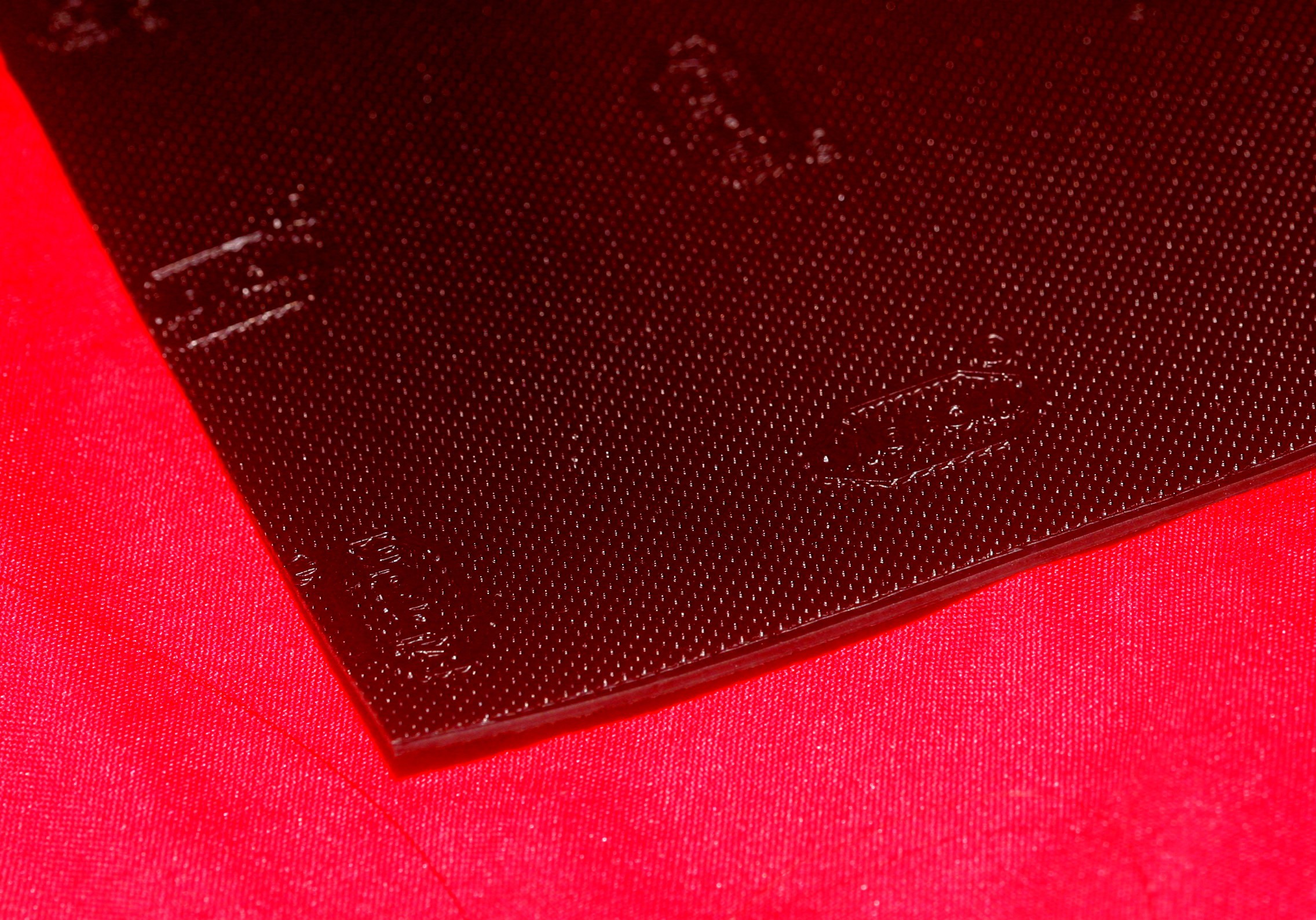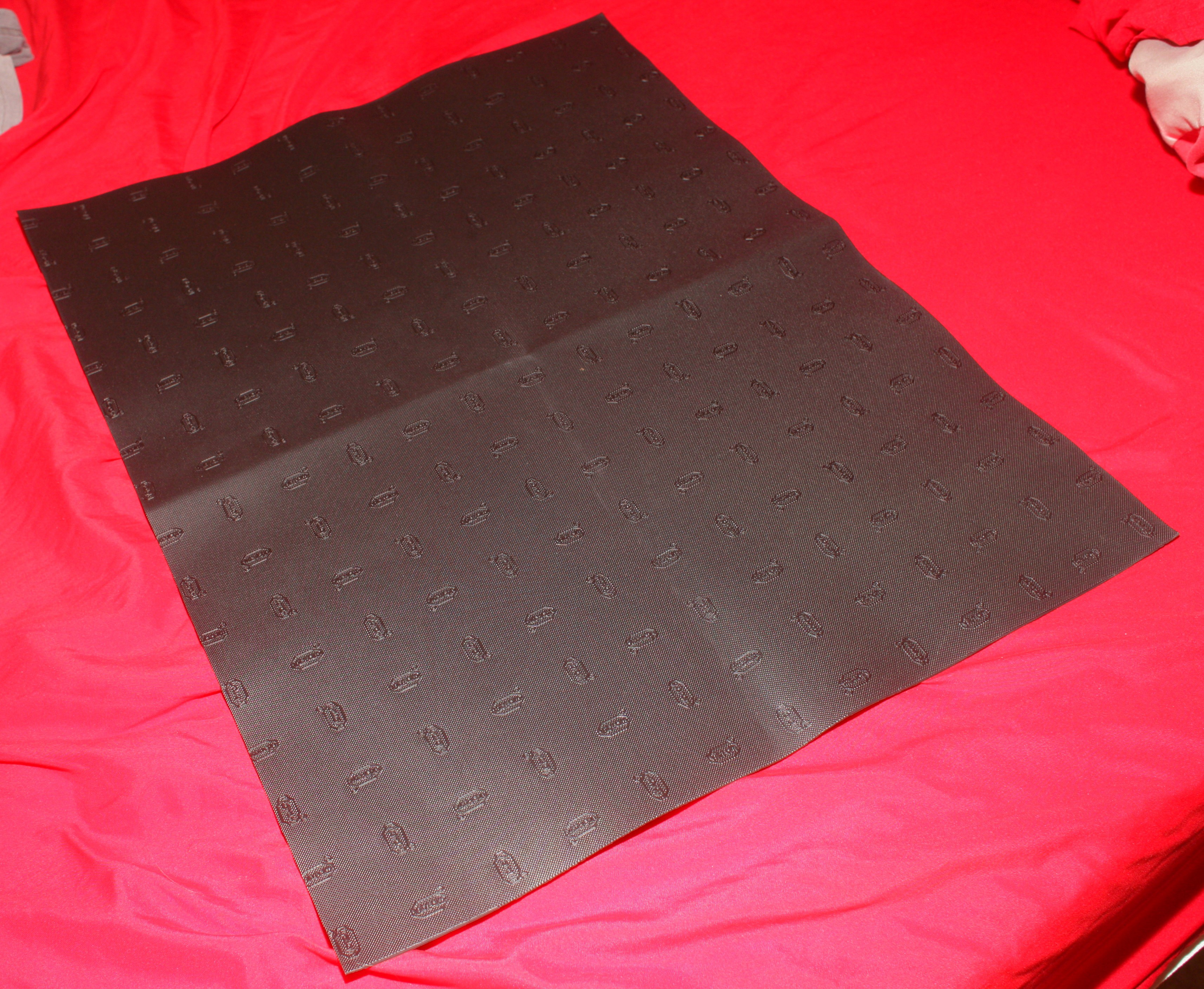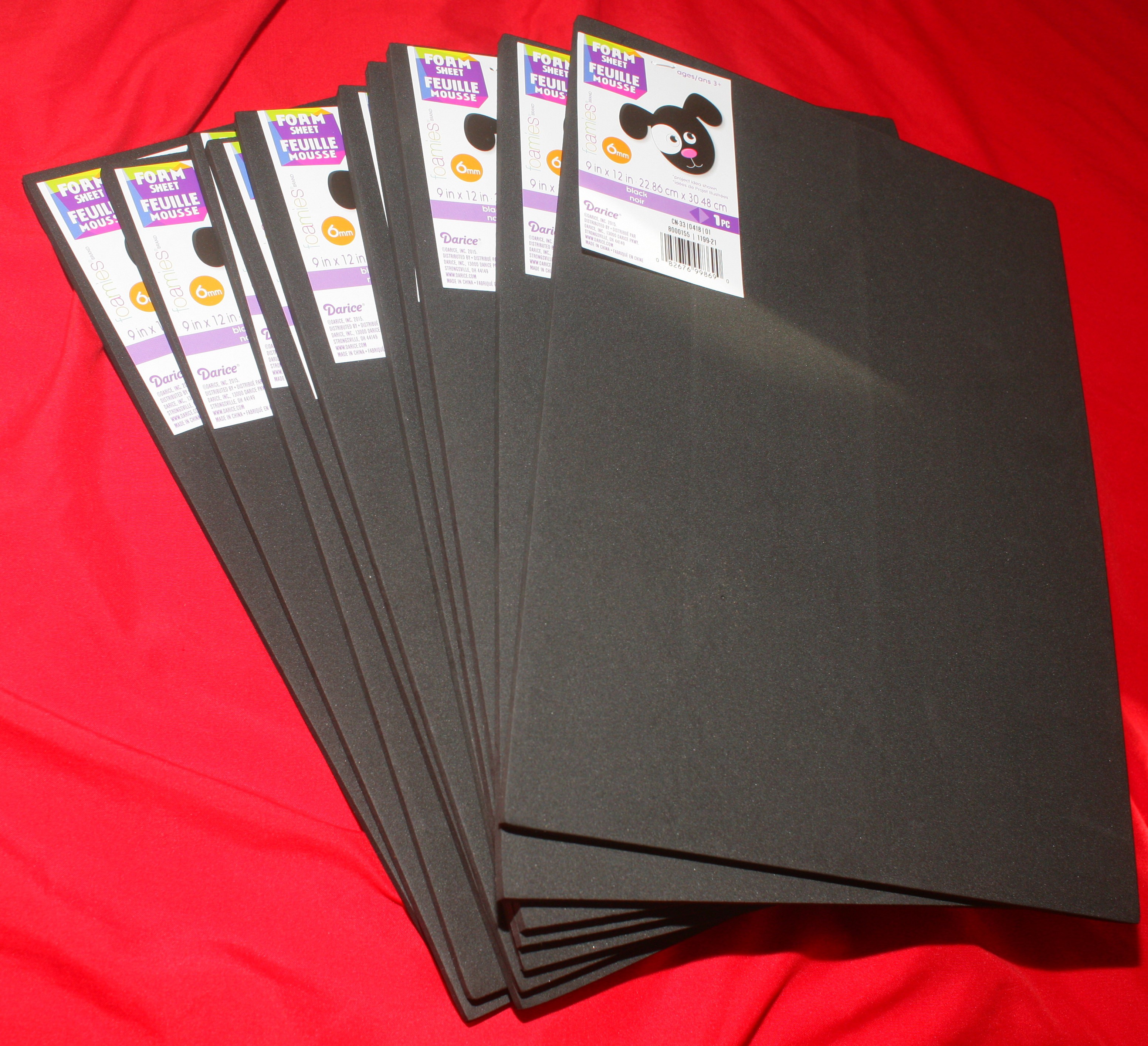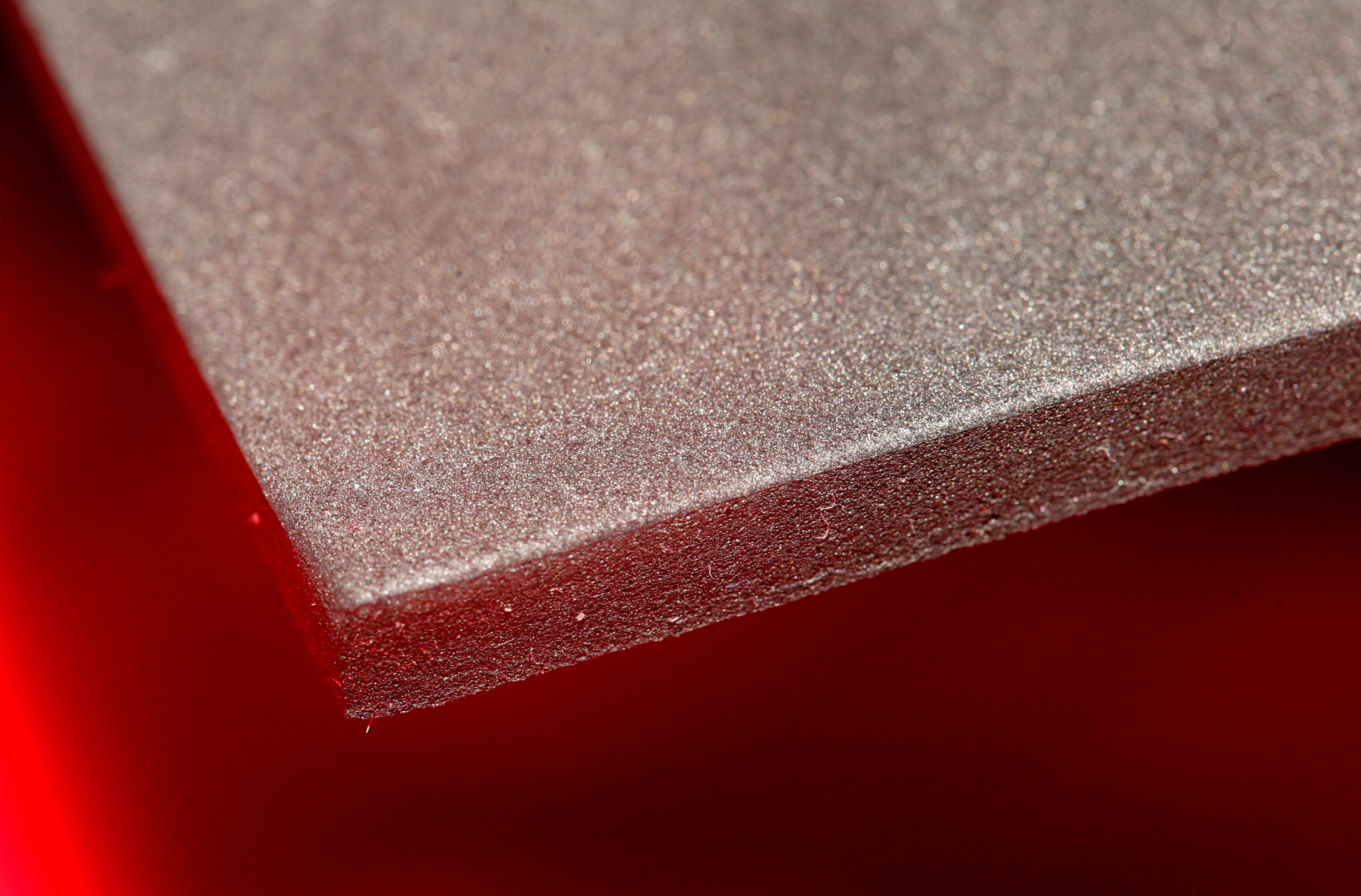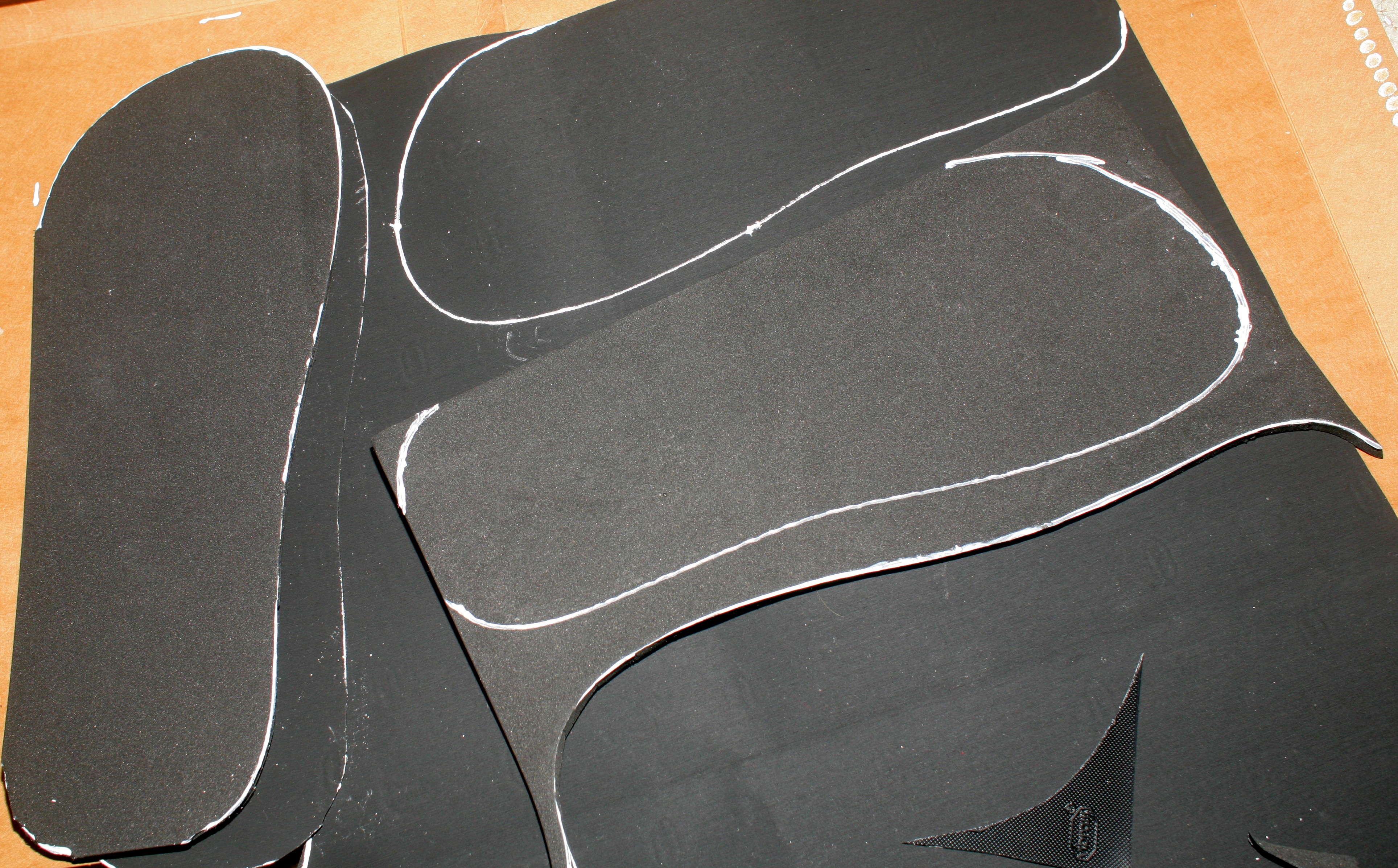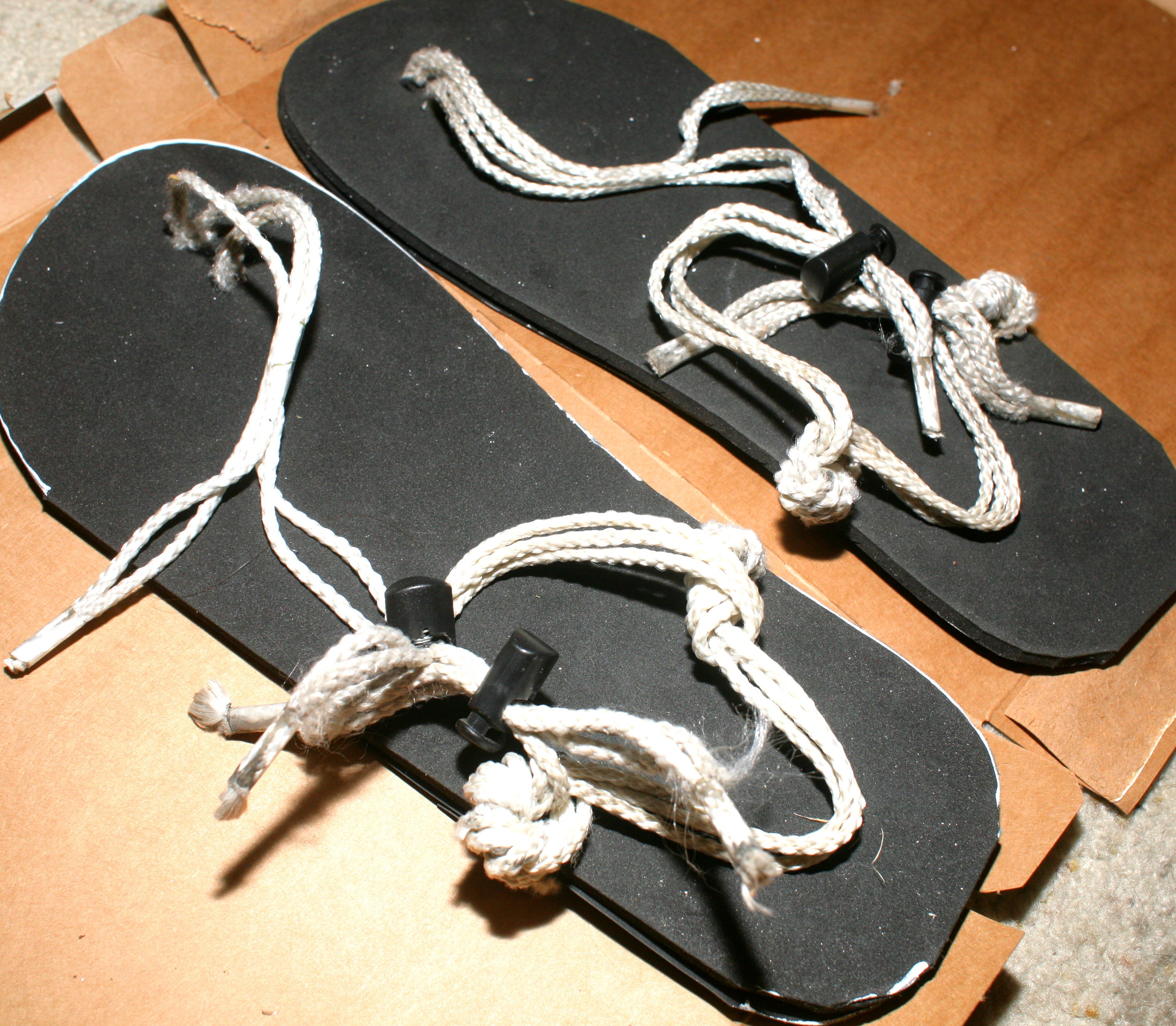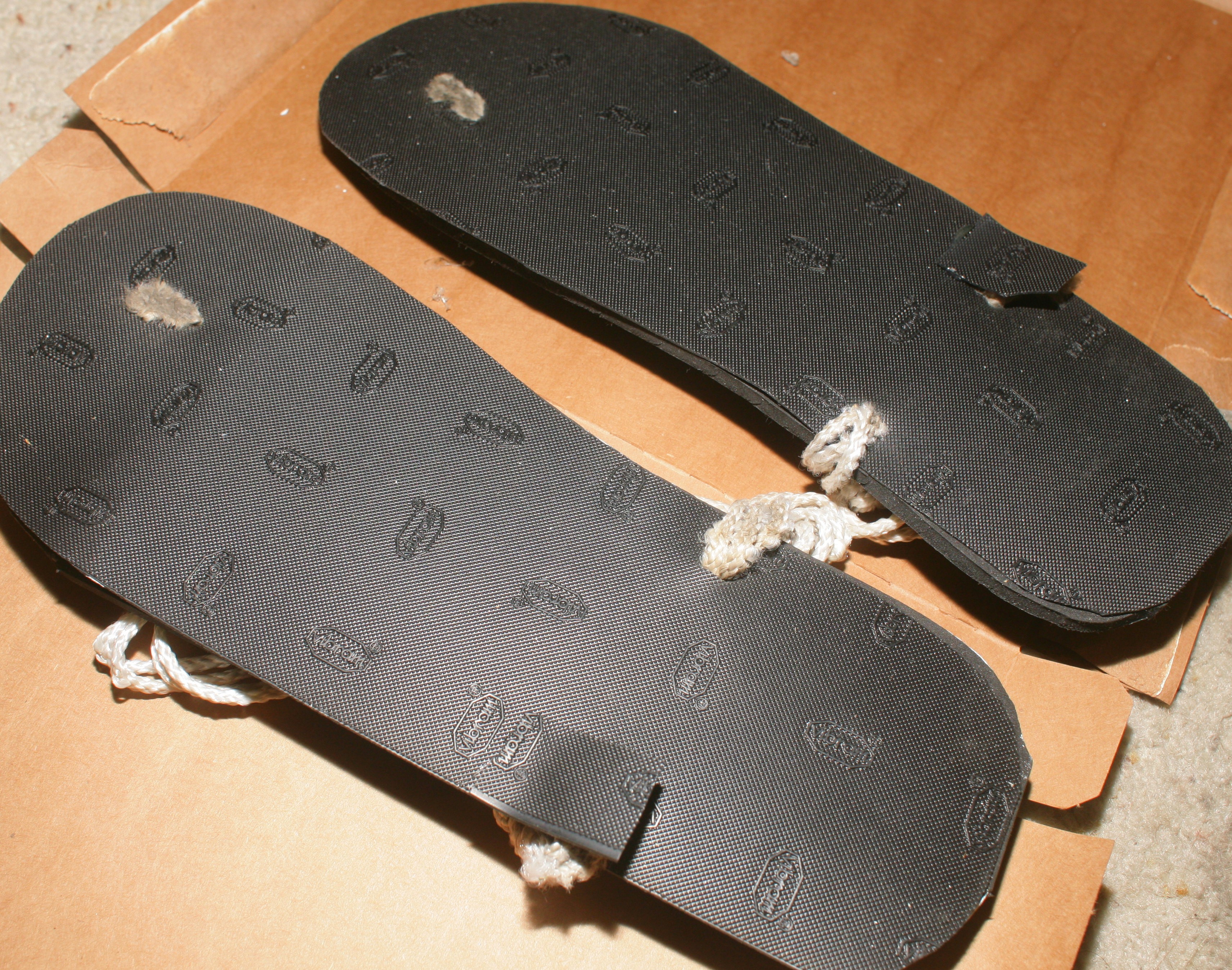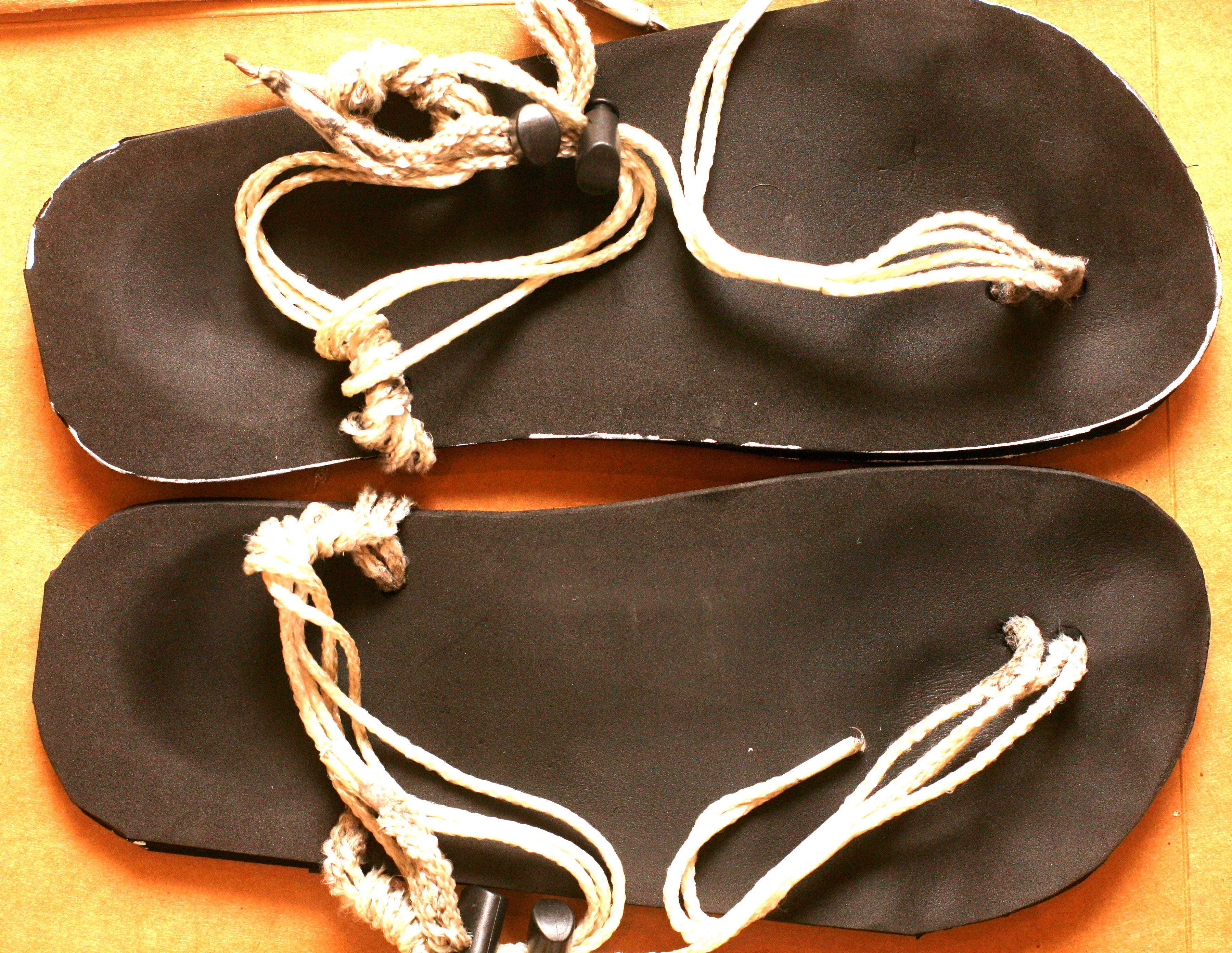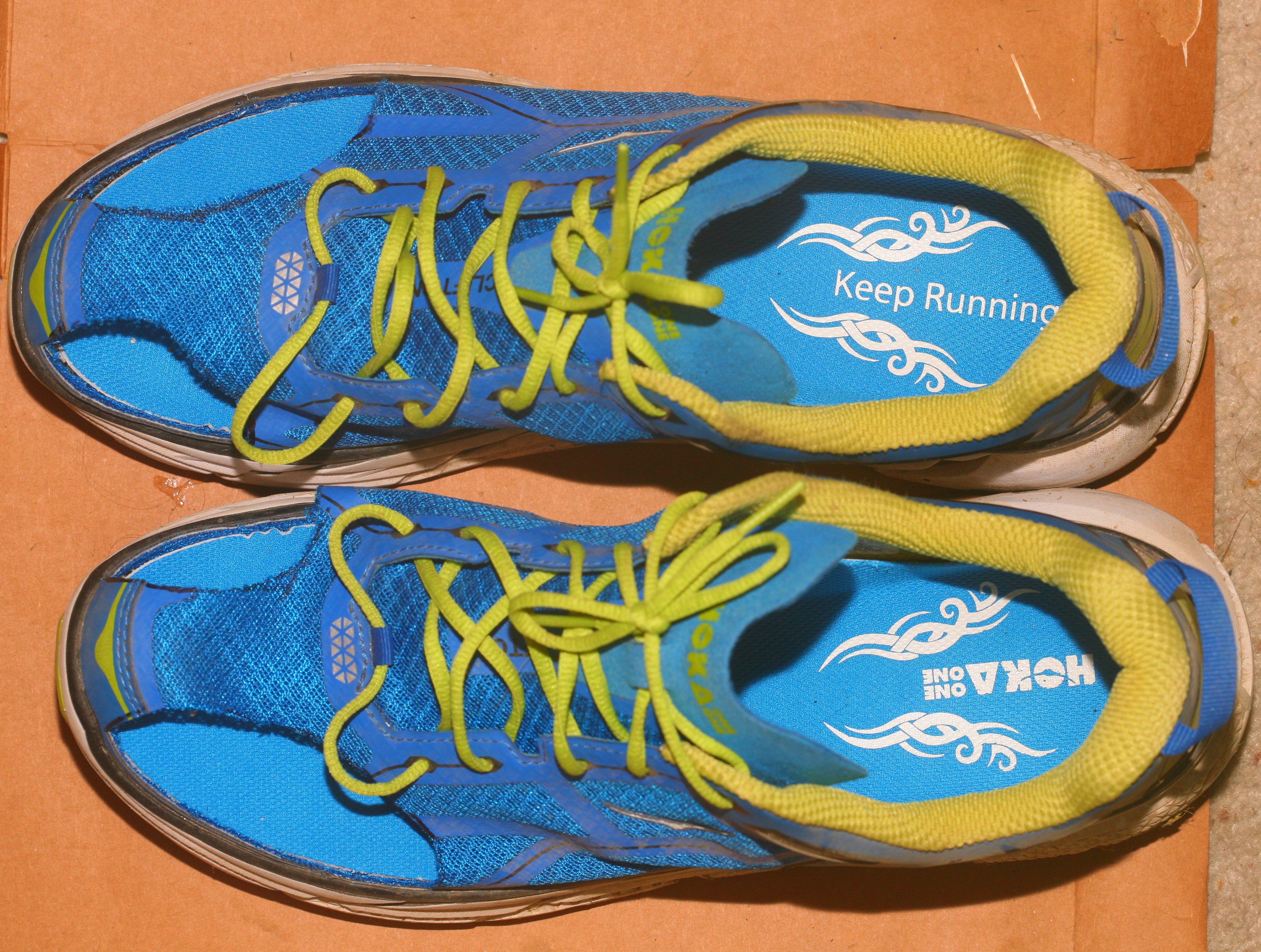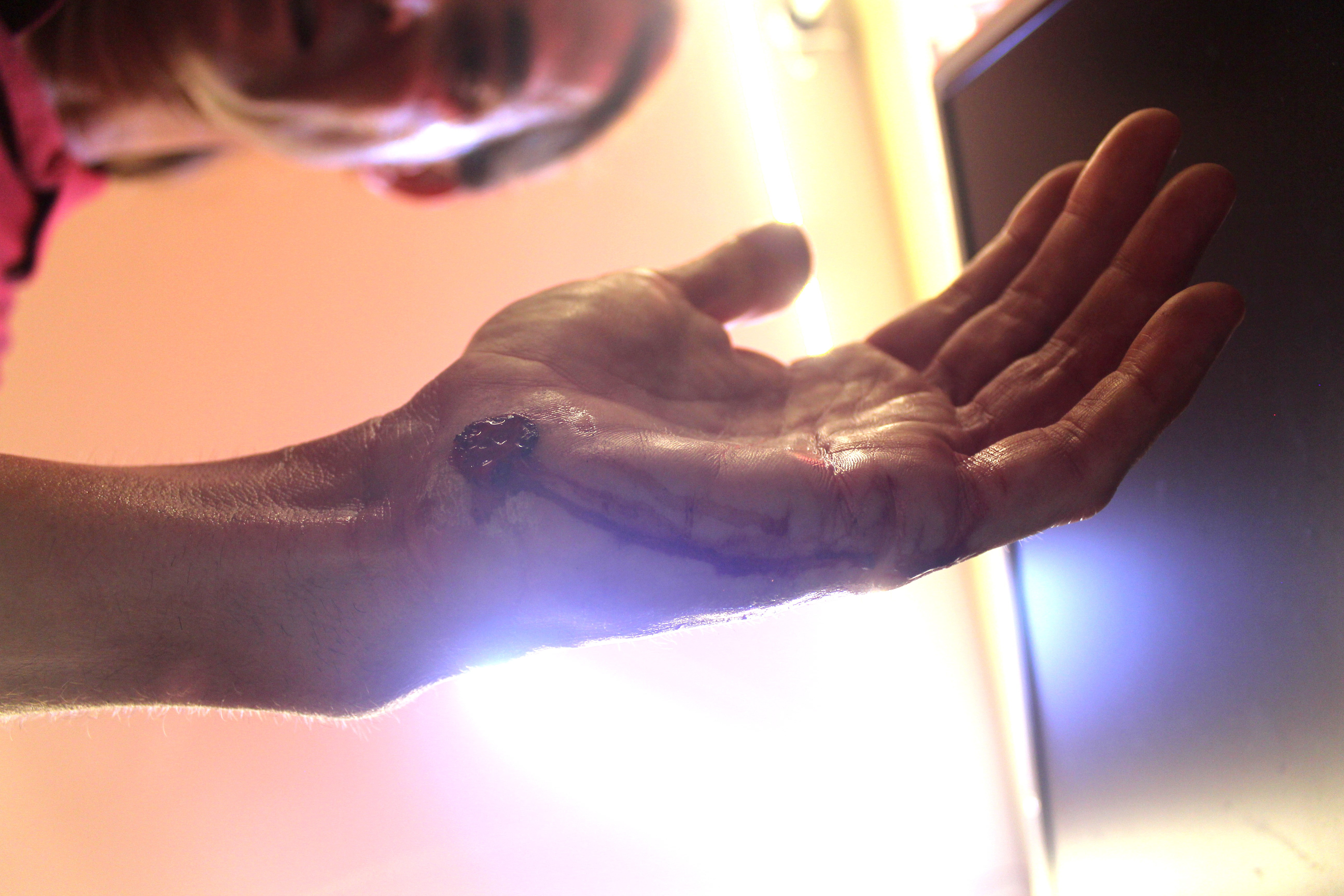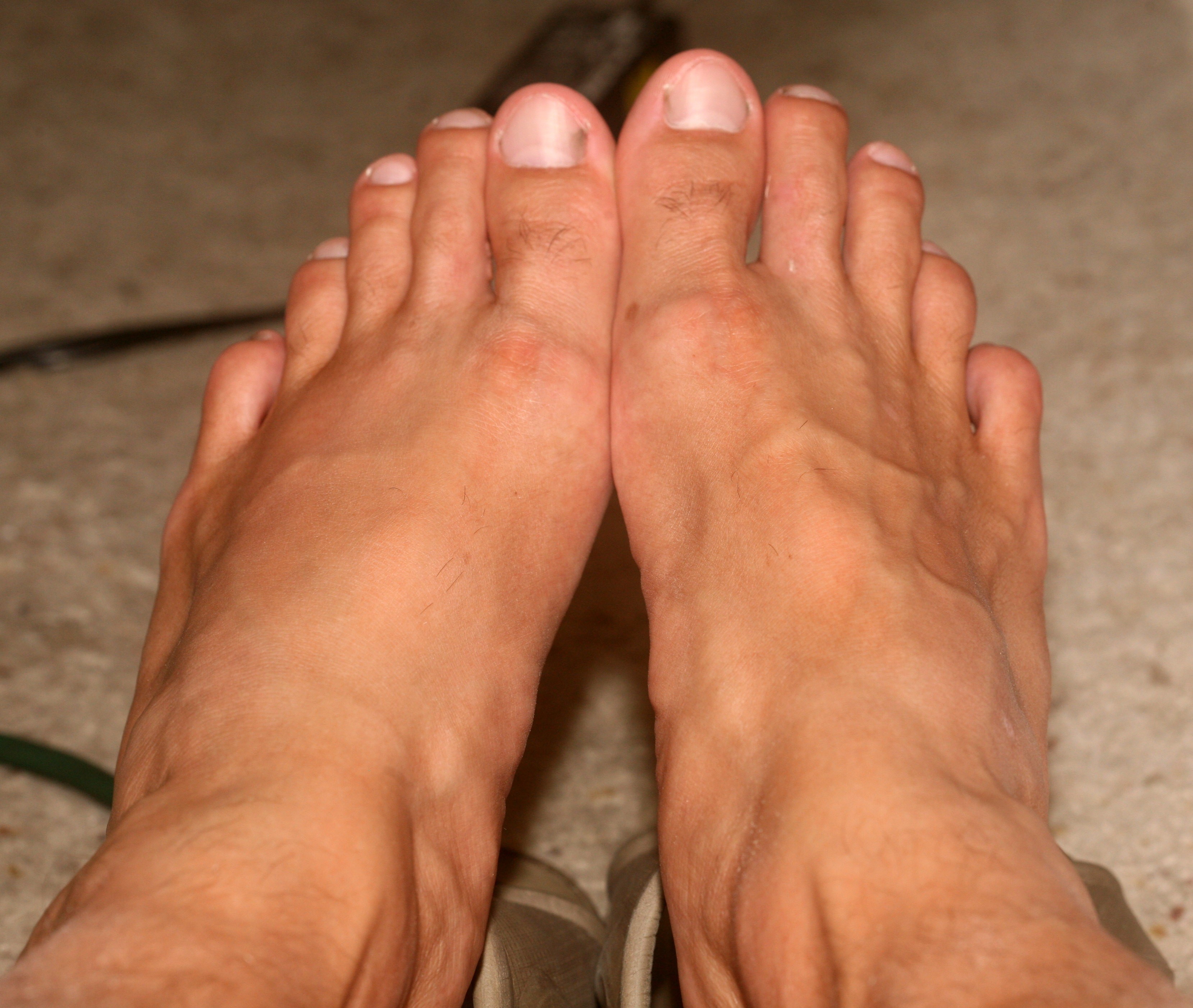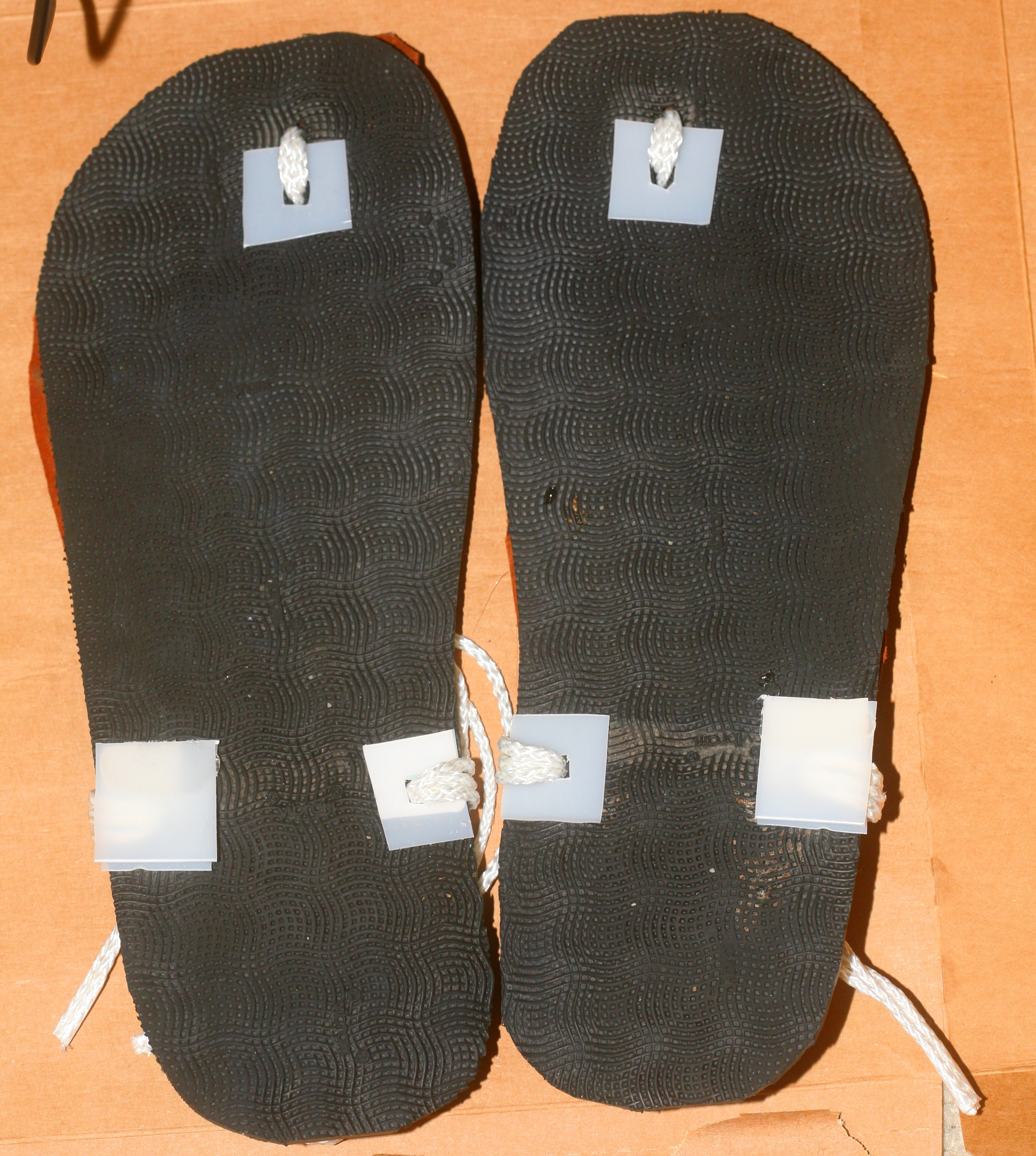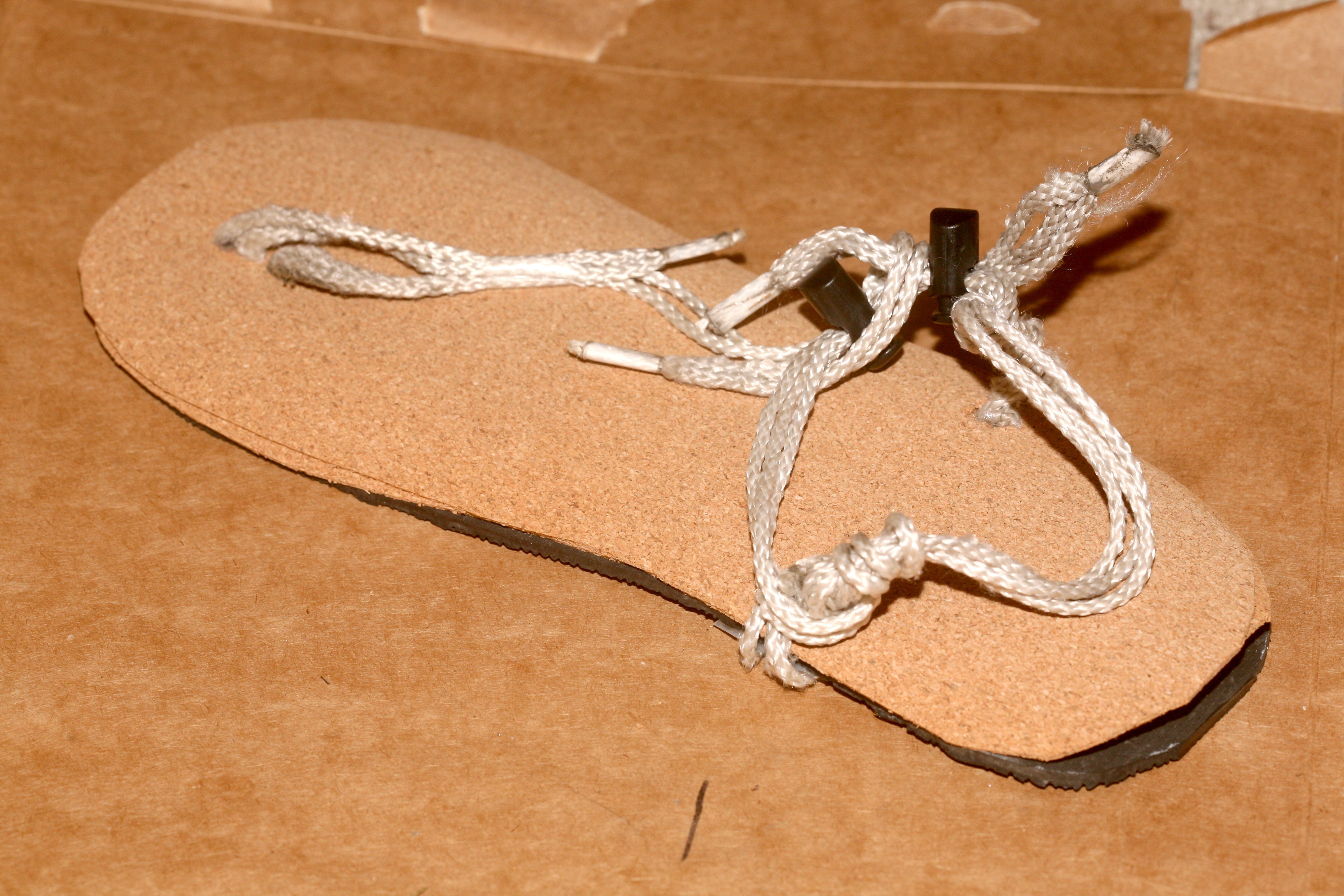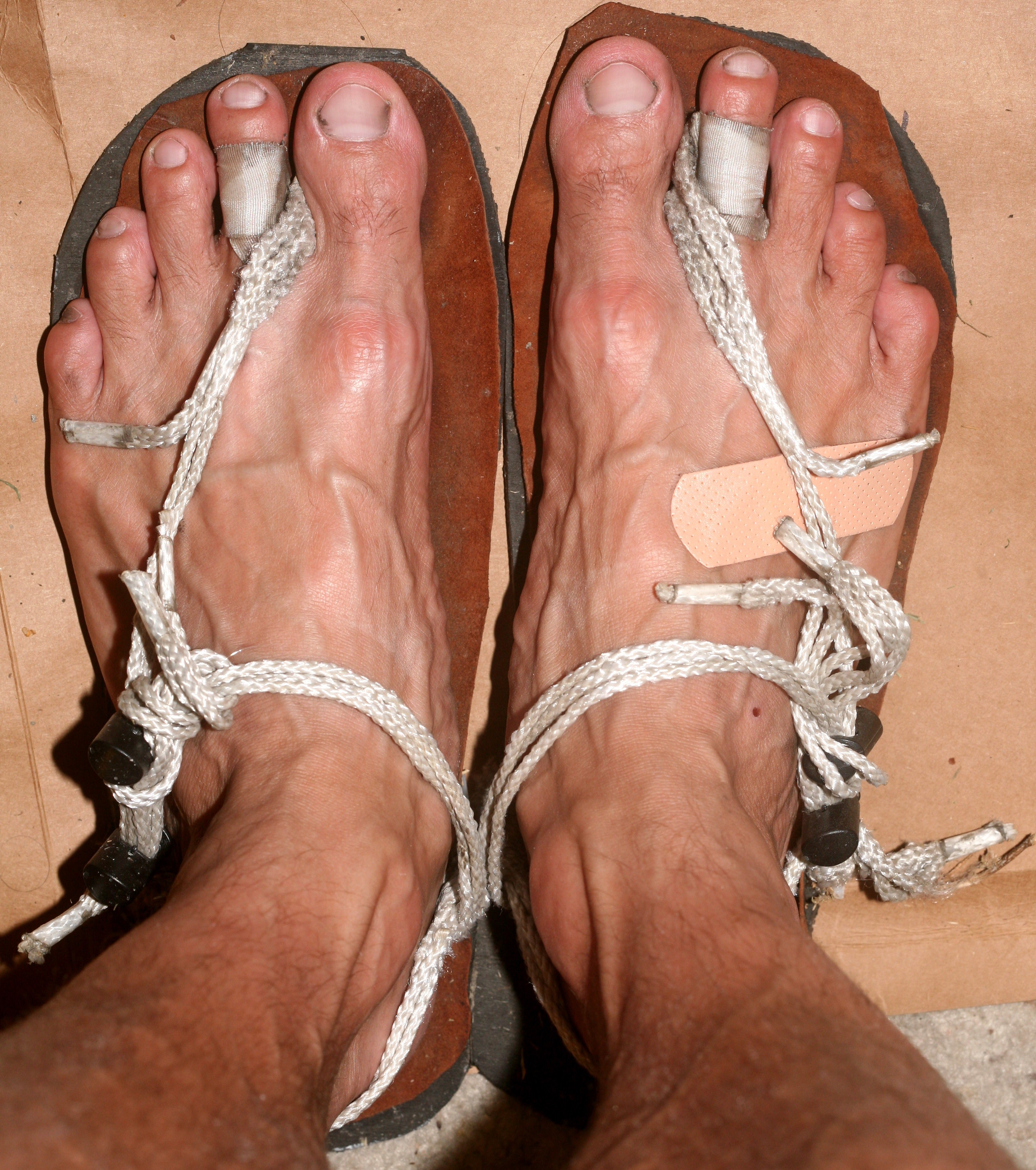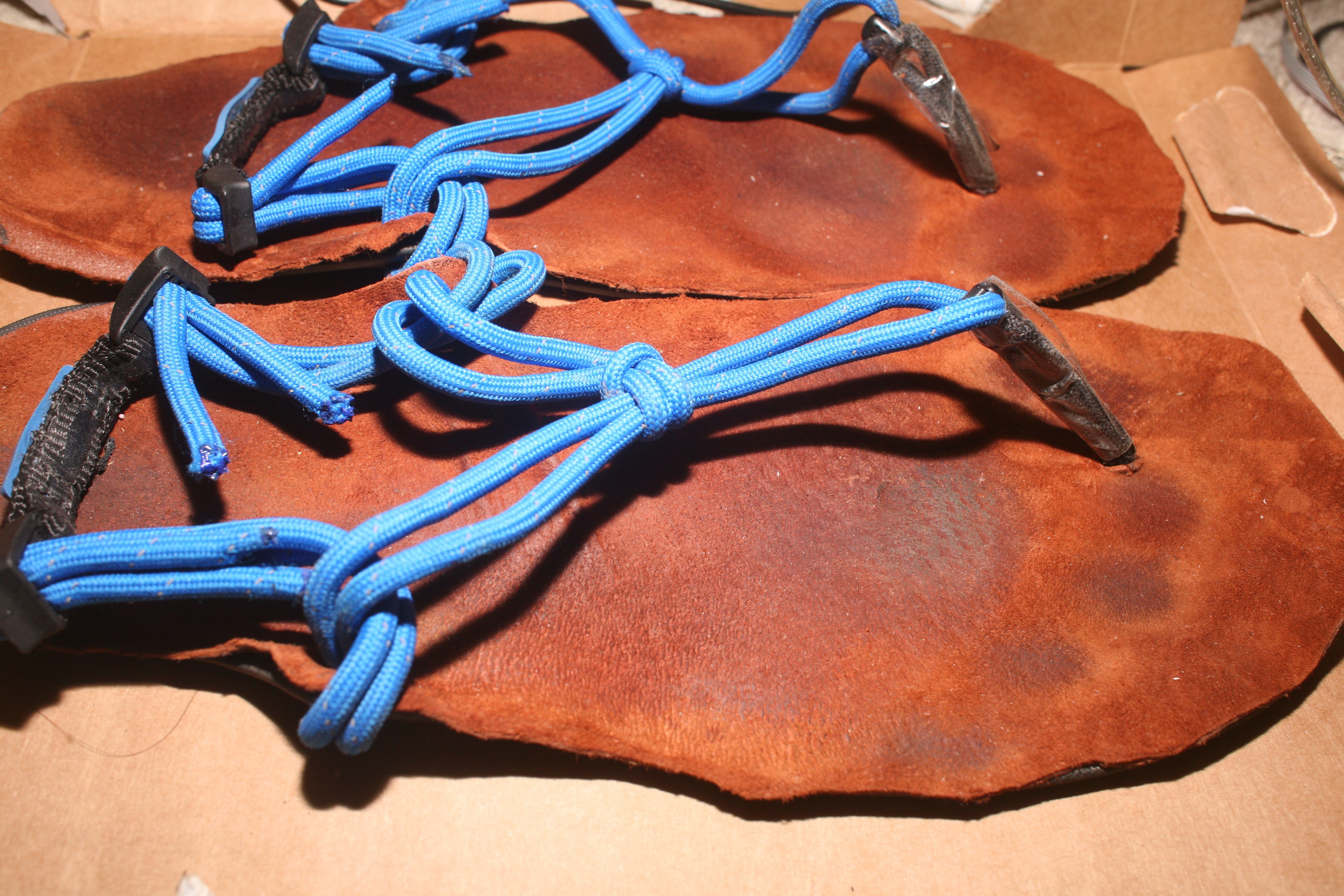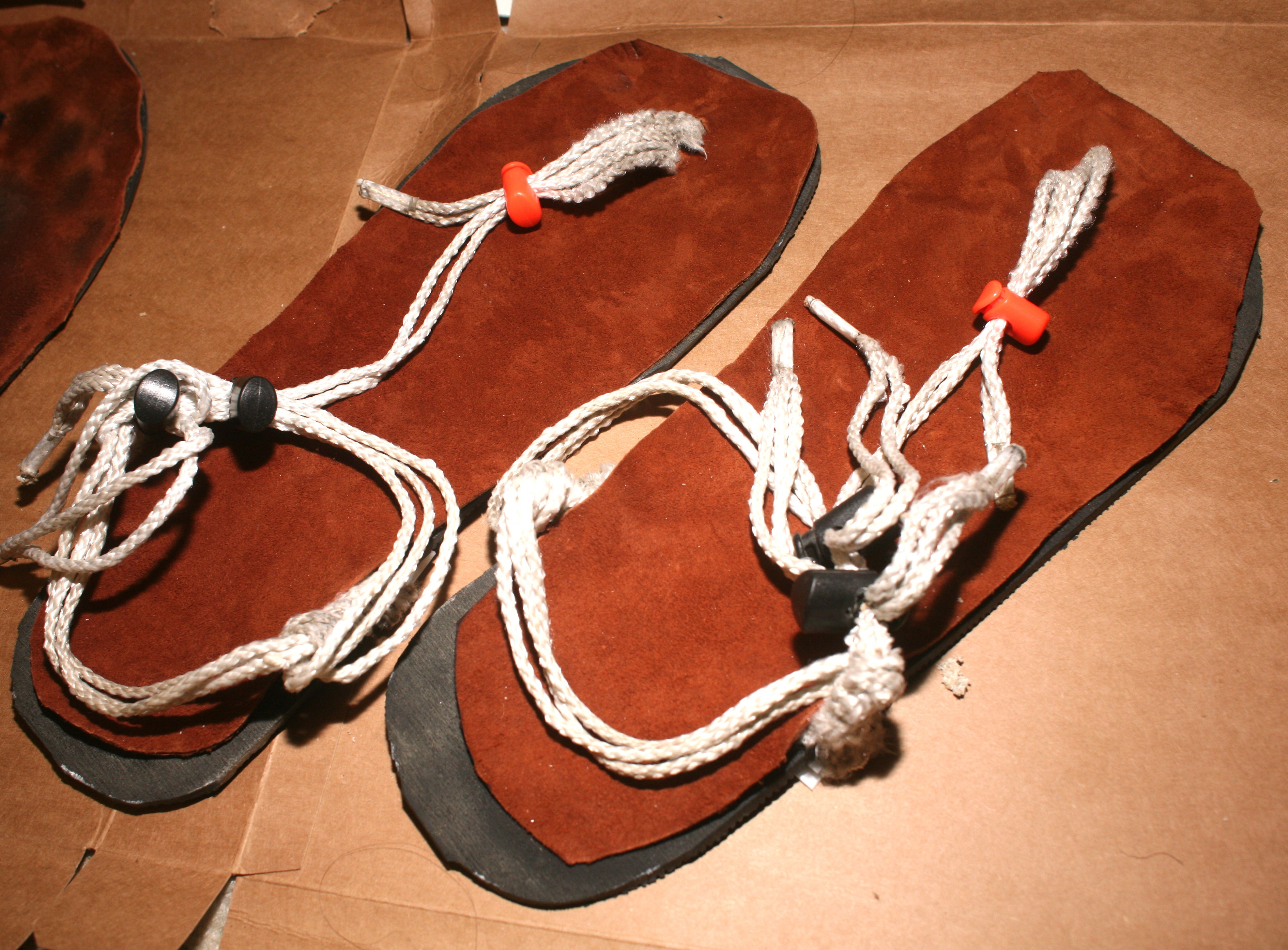-
EVA + Vibram
10/29/2018 at 17:30 • 0 comments$32 turned into a small sheet of rubber. It definitely didn't look big enough to justify the price.
![]()
![]()
https://www.amazon.com/Vibram-Tania-Protective-Sheet-Style/dp/B00I3LW9K2/
https://www.amazon.com/Bulk-Buy-Foamies-10-Pack-1199-21/dp/B00KDMQB4Y
![]()
![]()
![]()
![]()
![]()
To save money, work on electronics instead of clothing. EVA foam & rubber are what all running shoes are made of. You too can buy the raw materials, just like China. Vibram rubber is much harder than ordinary shoe rubber. The choice of thickness was more due to weight than softness.
The rubber had to be tack glued in places to keep from flopping around. 1mm was thin enough to use scraps to protect the string.
![]()
8 miles revealed they were very good for road races. They were lighter than flip flops. The foam compressed like flip flops. They were just as sensitive to rocks as flip flops, but less sensitive than bare rubber. The most abundant foam is 6mm. 12mm might be serviceable on trails. The 1mm Vibram showed no wear.
The foam is a brittle packing foam rather than the tough material a yoga mat is made of. It's not as tough as the glossy 2mm foam sold locally. The glossy 2mm might be a good liner for thicker soled sandals.
-
Back to sandals
10/25/2018 at 02:15 • 0 commentsA month after going back to shoes, the swelling & pain manely disappeared. Ran in sandals again & the swelling & pain returned. It didn't return with the flip flops, only with the vibrams. The metatarsal stress isn't from 300lbs of lion pressing down on it but from the whiplash as the toes follow behind the midpaw. The whiplash is a much smaller force, but repeated thousands of times. Might have to see a human doctor to finally heal the paw. Being part human has these problems, despite being manely lion.
Ideas emerged for using thinner vibram material, adding stock EVA foam on top, & ditching the suede. Surprisingly, the existing lace holes have held stacked materials together nicely without any heavy adhesive.
-
Hoka vs home made
10/05/2018 at 02:13 • 0 comments![]()
Opening the toe boxes came a lot faster than it did back in the days of being used to wearing shoes. The Hoka was truly awful, after 3 years of racing flats & sandals. The severe hamstring pain, blisters, & plantar fascia pain returned. It became obvious how they could cause all the tendinopathies of years past. Cushioning converts force into heat. The compression of the load bearing paw & expansion of the raised paw checks your paw strikes slightly higher than normal, exerting more stress on the hamstrings in their extended positions.
Metatarsal healing proceeded rapidly after converting to the Hokas. Got back to 9 slow miles within a week, but swelling was persistent.
![]()
Then, got back to 18.6 slow miles. The thick sole of a Hoka caught a curb & sent the lion down for the 1st time in 7 years. There was unbelievable hamstring pain from the Hokas & the historic initial plantar fascia pain which slowly faded away with use, but the feet didn't hurt as much as sandals. Have come to recognize it as swelling in the upper hamstring tendons rather than glute pain, because the pain is magnified by sitting & eventually leads to pinching of the sciatic nerve.
-
Return of the Hokas
09/29/2018 at 01:55 • 0 comments![]()
It's the last pair of untouched, 2nd generation Hoka Cliftons in the world. They were bought before the high hamstring tendinopathy affair of 2015 & never worn. The arch padding was a real problem for lions. Being so high created another mechanical disadvantage. The price has remaned the same. The newer generations are heavier.
It was decided to use them for trails & to try to run again without waiting 5 years for the fracture to heal. It didn't improve until going back to shoes full time & not running. Must have forgotten how intense unpadded sandals were at even walking speeds.
Still wouldn't use Hokas for speed.
7 miles of 12 minute miles were decent but not perfect. Hokas cause more pain on their own than a fracture, but it's temporary.
-
Death of sandals
09/19/2018 at 02:35 • 0 commentsSo the metatarsal starts feeling good, the lion tries running 12 minute miles, & it deteriorates again. It's now believed manetaining speeds faster than 8 minutes/mile for 8 miles, on the unpadded soles did it. After 3 weeks of no meaningful recovery of the metatarsal, it became clear that the lion kingdom can't afford to have lots of fractures & the easiest way to end fractures is not wearing sandals for certain regimes.
Shoes:
Distances over 15 miles & trails
Converted flip flops:
Speeds faster than 7 minutes/mile.
Speeds faster than 8 minutes/mile for over 3 miles
Unpadded soles:
Speeds faster than 8 minutes/mile for below 3 miles.
Distances below 15 miles on pavement.
-
The 1st trail run & paw injury
09/06/2018 at 02:33 • 0 commentsThe vibrams were a disaster. They were brutal on gravel & steep descents. Definitely need to see the ground, but you're always walking a lot of easy surfaces that could be run with more padding. Descents scoop up loads of dirt. Getting cow manure on your paws is guaranteed.
![]()
Then came another human paw failure. It's real junk compared to a lion body. It started as a metatarsal pain which went away after a day of rest & returned after 10 miles, but wasn't crippling. The trail run blew it up, despite being less intense. The same paw malfunction happened in shoes, before. Suspect it always began with stepping on a rock the wrong way.
-
Suede returns
08/26/2018 at 23:27 • 0 comments![]()
![]()
A digestive disaster spurred another rebuild. If they were shoes, they would have to be destroyed. Fortunately, the sandals could just be disassembled & washed off. Replaced the laces, since they still retained a brown shade of sorts. It's either old age, lack of will power, or extreme food poisoning.
The old plastic system returned, as well as the suede. The Target insoles don't last long. Suede had issues folding up, so it got laces through it. The lace protectors wear down so fast, it's easiest just to replace them on the sandal. Having plastic going across the sandal only felt like running on top of strings.
The Vibram soles showed slightly less wear than a shoe.
-
17.6 in Target insoles
08/18/2018 at 05:12 • 0 commentsIt became clear that last week's cramping was from decreased hip flexor activation, which was caused by foot pain. Lions try to keep their paws low & rely on their hips instead of glutes for force, when they hurt. The Target insoles only made a subjective difference, after a while. The Walmart flip flops may be required for the long distances. There might also be a way to activate the hip flexor/glute system without raising the paws. The lion kingdom only has Sage Canaday videos where he always raises his paws high.
![]()
An experiment with 3/32" cork insoles failed. It crumbled on contact. $5 gone
There's definitely a benefit to having more cushioning, but to keep the toe area as light as a sandal, it's easiest to put all the cushioning under the heel. Then, you can get more cushioning by heel striking, while keeping the toe feel of a sandal. Such is why shoes are the way they are & it all begins with wanting the feel of a sandal.
-
Beyond 12 in suede
08/11/2018 at 08:54 • 0 comments![]()
The 1st attempt in suede coated vibrams was a disaster. The suede prevented chafing, but got pretty hard. It might have been harder than the rubber, but either way, you're feeling nothing but bare concrete. By mile 12, the paws felt like meatloaf. Cramping in the calves soon followed. It might have been several runs in 90F during preceeding days throwing the lion off, muscles being activated which weren't in shoes, or most of it being over 85F. It was manely walking, after mile 14. Topped out at 18.4 miles.
Discovered cramping manely attacks if you stop moving. Pacing around the apartment while drinking salt, potassium, & water got it under control.
Definitely need a minimal amount of cushioning to go beyond 12. Taping the toes prevented toe plug chafing. The orange farsteners became a real chafing problem & they never needed to be adjusted. Replacing them with tape prevented chafing from those.
The thought occurred of replacing insoles every few miles. This would work in a loop race or using drop bags. Very disappointing to have lost last year's fitness.
-
Suede results
07/31/2018 at 05:29 • 0 comments![]()
The 1st 10 miler in suede Xeroshoes was a failure. The sole didn't cause any blistering, but the sides were still blistered. The heel area with its gimmicky side lugs is just too narrow. The toe plug still caused well & truly blisters again. The suede didn't break away from the laces, but it became quite hard in the toe area.
![]()
Target insoles lasted around 50 miles. It was time to go when large pieces broke off under the toes. They were pretty cushioning, but their thickness may have aggravated the toe plug issues. The last of the suede scraps went in.
Toe plug blisters remane the biggest problem, since the rubber under the toes is much heavier than a commercial shoe. Would say commercial shoes have a toe drop out of necessity to lighten the toe area. Steep footing on hills until the lion is pushing more on the strings than the soles is another problem. A complete shoe upper is the result of spreading the forces on the laces over a wider area.
 lion mclionhead
lion mclionhead